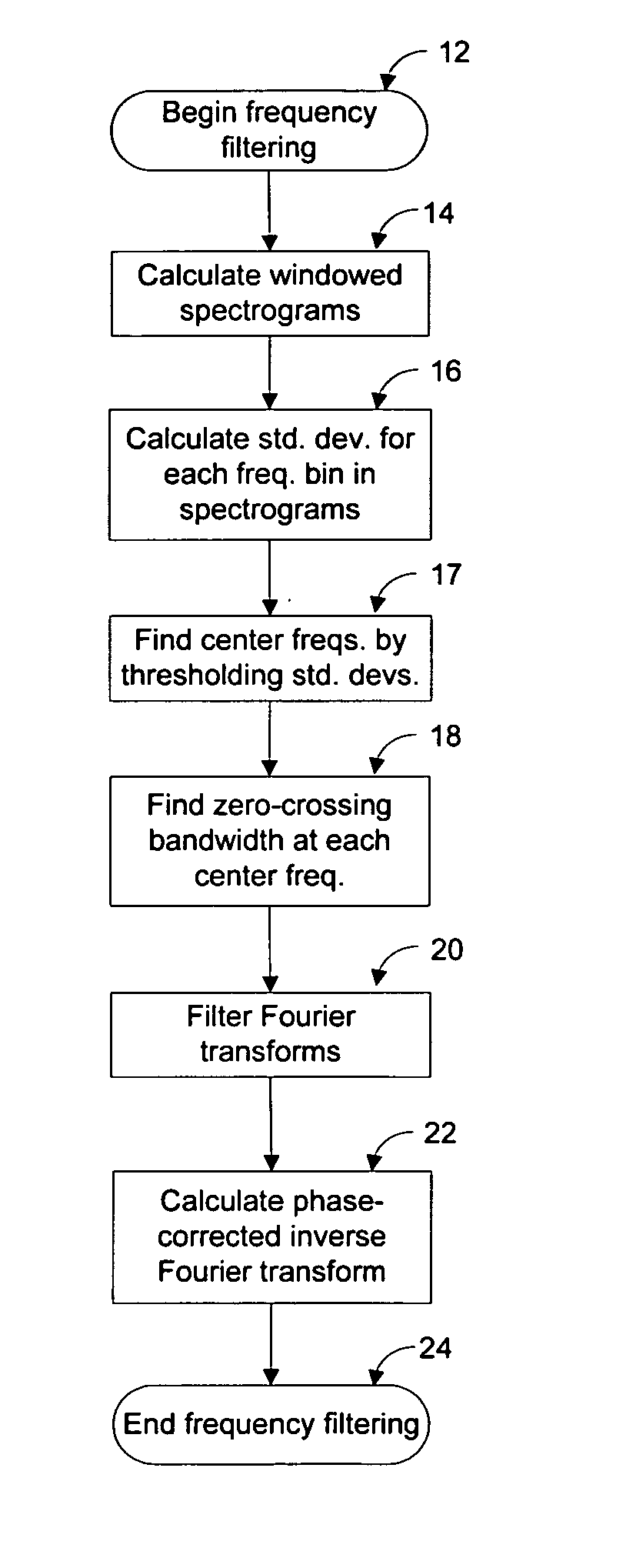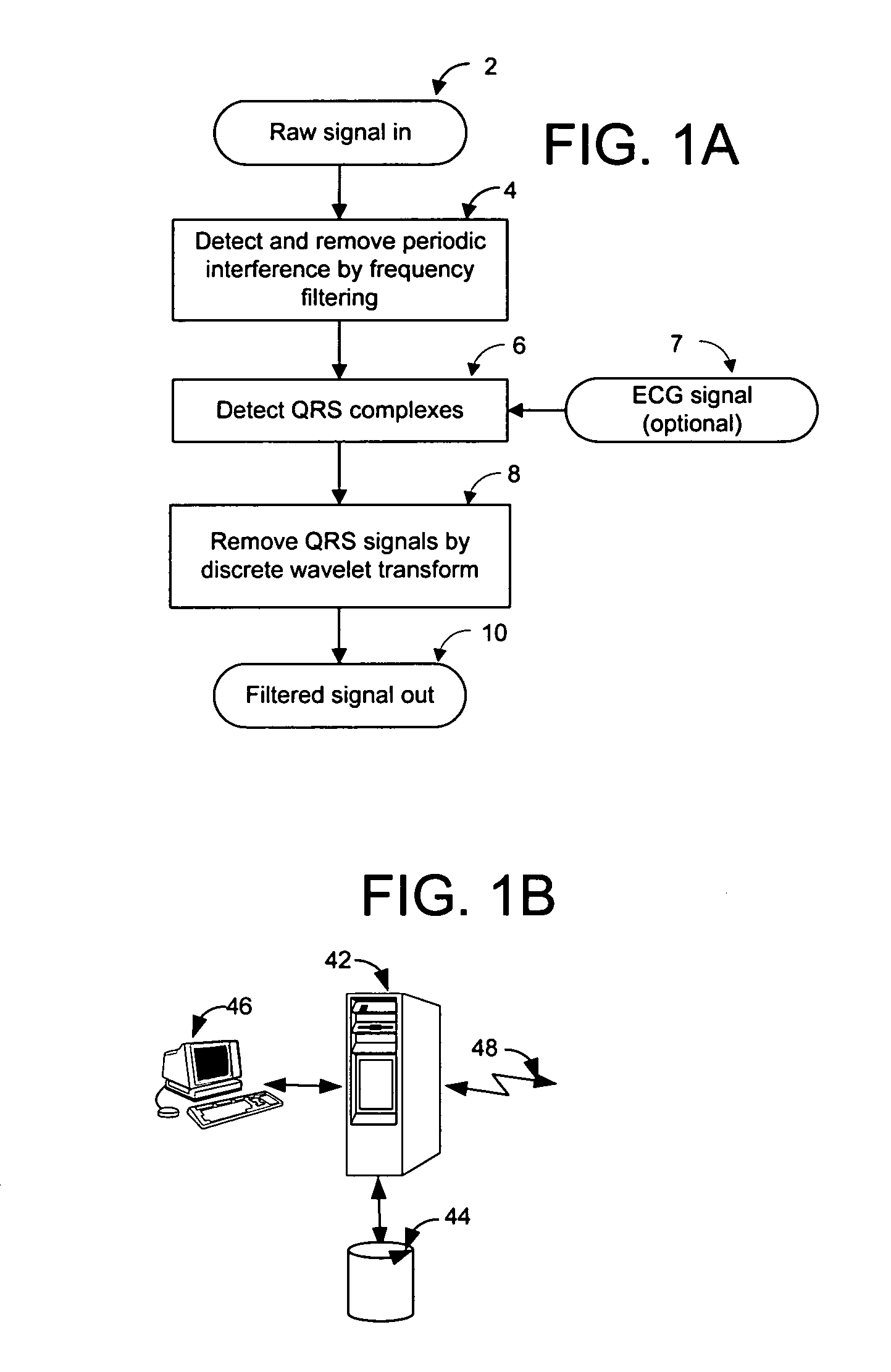Method and system for limiting interference in electroencephalographic signals
a technology of electroencephalographic signal and interference, applied in the field of processing weak physiological signals, can solve the problems of spurious signals, inability to detect abnormalities, so as to reduce the need for continuous monitoring and automatically minimize physiological and non-physiological artifacts
- Summary
- Abstract
- Description
- Claims
- Application Information
AI Technical Summary
Benefits of technology
Problems solved by technology
Method used
Image
Examples
example
[0070] This section describes analysis according to the methods of this invention of single channel EEG and EOG data that was recoded from a sleeping subject under poor signal conditions. Also available was a single channel ECG signal.
[0071] Input signals were first processed to remove narrow band periodic interference according to the process illustrated in FIG. 2A. Input signals were first divided into 30 sec. segments (thirty second segments, known as epochs, being routinely used for sleep staging). Overlapping windowed spectrograms of the 30 sec. segments of EEG and EOG signals were calculated using a fast Fourier transform.
[0072]FIG. 4 illustrates the overlapping, windowed spectrograms in a time-frequency domain for both the input EEG and EOG signals (bands one and three in FIG. 4) and for the filtered EEGf and EOGf signals (bands two and four in FIG. 4). EEG band one demonstrates interference 52 of high and constant amplitude that was present throughout the segment at approx...
PUM
 Login to View More
Login to View More Abstract
Description
Claims
Application Information
 Login to View More
Login to View More - R&D
- Intellectual Property
- Life Sciences
- Materials
- Tech Scout
- Unparalleled Data Quality
- Higher Quality Content
- 60% Fewer Hallucinations
Browse by: Latest US Patents, China's latest patents, Technical Efficacy Thesaurus, Application Domain, Technology Topic, Popular Technical Reports.
© 2025 PatSnap. All rights reserved.Legal|Privacy policy|Modern Slavery Act Transparency Statement|Sitemap|About US| Contact US: help@patsnap.com



